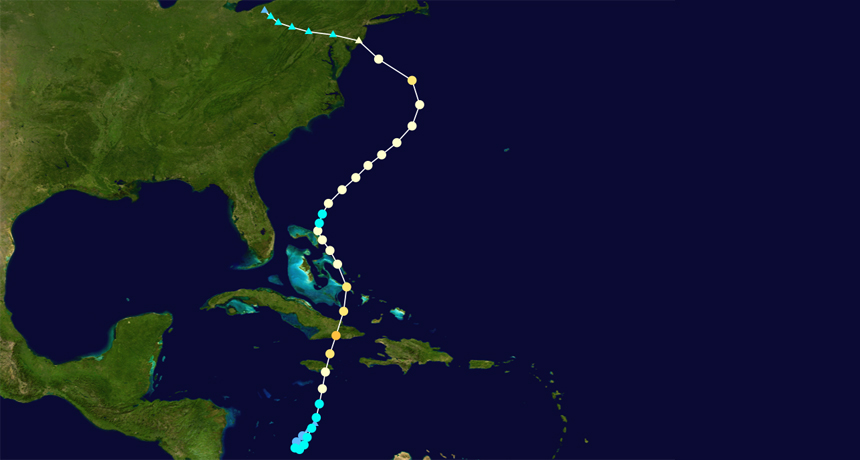No more Superstorm Sandys expected for a long time
Future conditions less likely to steer hurricanes directly into the East Coast

Hurricane Sandy slammed into New Jersey at nearly a right angle. New simulations suggest that the atmospheric conditions that allowed the hurricane to follow its unusual path (shown) will become less frequent in the future.
Cyclonebiskit/Wikipedia






